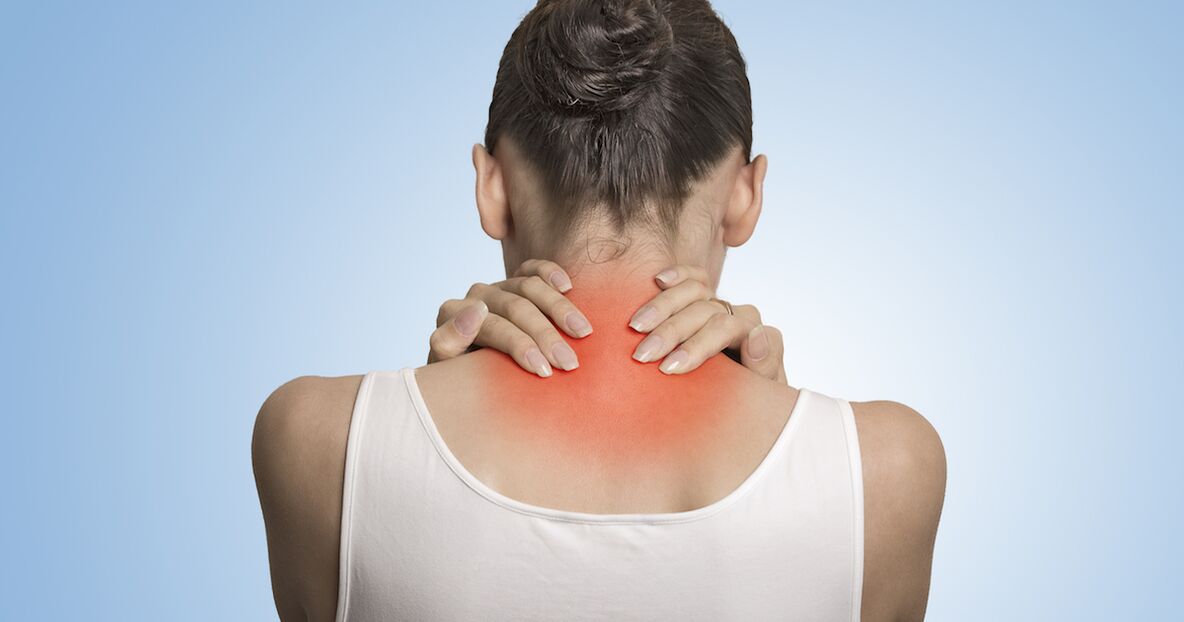
The modern sedentary lifestyle is the reason that common diseases such as cervical osteochondrosis are actively getting younger. "IT people", drivers and other representatives of "sedentary" professions are increasingly complaining about it. According to doctors, even 17 -year -olds complain of cervical osteochondrosis. As a rule, these are those who are actively using smartphones.
The fact is that depending on the inclination of the tool, the human spine experiences a load of 12 to 27 kg. The more time a person spends in this position, the faster the intervertebral disc wears out, pain in the neck and back occurs, and then osteochondrosis. Doctors strongly recommend starting treatment immediately when the first symptoms appear, otherwise the consequences of neglecting one’s health may be irreversible.
What is this disease - cervical osteochondrosis?
The most mobile among all parts of the spine is the cervix. It has seven vertebrae connected by an elastic intervertebral disc. Each disc has a fibrous annulus with a nucleus pulposus in it.
Metabolic disorders in it may indicate the appearance of osteochondrosis, in which the intervertebral disc loses its strength and elasticity. In the future, under the influence of load, fibrous rings protrude, cracks appear on it.
The cervical region has many nerve and blood vessels to supply nutrients to the brain, and the vertebrae are adjacent to each other. Thus, even a moderate deformation of one of the vertebrae leads to the fact that the structure of nerves and blood vessels is compressed.
What are the symptoms of cervical osteochondrosis and what are the dangers?
The first signs of the disease manifest themselves in the form of tension and a tingling sensation in the neck muscles, pain that can radiate to the back of the head, shoulder blades, and arms. When cerebral circulation is disrupted due to osteochondrosis, migraines, vegetovascular diseases, and hypertension appear. Also, the disease has adverse effects on the cardiovascular and respiratory systems, general coordination, hearing and vision deterioration.
If treatment is not started in a timely manner, cervical osteochondrosis can lead to intervertebral protrusion, hernia, and vertebral artery syndrome.
Diagnosis of cervical osteochondrosis
Diagnosis and treatment of osteochondrosis of the cervical spine is carried out by highly specialized specialists - orthopedic traumatologists and neurologists who specialize in vertebrology. First of all, the doctor determines the severity of the symptoms of the disease. Possible causes of appearance are also determined - hazardous working conditions, patient habits, the presence of injuries.
If this is necessary, the patient is recommended additional examinations:
- X-rays show the degree of instability of the cervical vertebrae.
- MRI can detect protrusion formation, hernia discs and soft tissue conditions.
- Ultrasound of the head and cervical canal (Dopplerography) is recommended for cerebrovascular accidents, migraines. This examination allows you to determine the condition of the vertebral arteries, veins, as well as the presence of pathological tortuosity and vascular loops. Ultrasound also allows you to see violations of the patency of blood vessels. Together, all of these examinations allow you to see an overview of the condition of the cervical spine to establish the diagnosis correctly and prescribe the most effective treatment and further rehabilitation to obtain long-term results.
Characteristics of the treatment of osteochondrosis of the cervical spine
The treatment aims to increase blood supply to the brain and tissues around the cervical spine, increase the mobility of clogged segments of the cervical spine, and reduce pain and myotonic syndrome.
To achieve this goal, various methods are used:
- Massage in combination with mild orthopedic correction to increase blood flow in the cervical spine.
- Short lever method for spinal correction. This non -traumatic method allows you to remove functional blocks effectively and restore segment mobility.
- Shock wave therapy to improve metabolic processes, renew cells and areas of affected tissue, and eliminate muscle spasms.
- Carboxytherapy (therapeutic effect of carbon dioxide on spinal and joint tissues).
- Physiotherapeutic treatment methods (electrotherapy and magnetotherapy).
- Drug treatment (blockade, multizonal injection etc. ) in combination with the above methods. The drug is used only in a few cases, to relieve acute conditions with myotonic (soft tissue edema) and pain syndrome.
Exercise therapy for osteochondrosis of the cervical spine
In the treatment of disease, physiotherapy exercises are becoming increasingly popular. It is used not only in a state of remission, but also as a prevention of cervical osteochondrosis. Physical exercise improves blood circulation, strengthens the muscular corset, removes restrictions on vertebral mobility, increases range of motion, and allows you to restore neuromuscular connections.
Effective results were achieved with therapy according to the Finnish-German method of David, conducted at the Institute of Vertebrology and Rehabilitation. During complex computer tests, weakness of the cervical spine, muscle asymmetry in the cervical region, mastery or lack of development of the muscular system are determined. Based on these indicators, load possibilities are calculated and individual training programs are formed on an innovative medical simulator. For treatment and consolidation of results, a course of 24 sessions should be taken twice a year. The results of training on the simulator can usually be seen after 5-6 sessions.
Medication alone is not an option
The signs of cervical osteochondrosis are often ignored or treated on their own. Meanwhile, it can lead to serious complications. A person is particularly at risk in the case of self -treatment or the use of traumatic manual techniques and physical manipulation, which not only do not cure, but can even exacerbate the disease. It is better to entrust the treatment of cervical osteochondrosis to a qualified specialist who will select for you a gentle, modern and effective method that excludes the possibility of injury to the affected cervical spine.













































